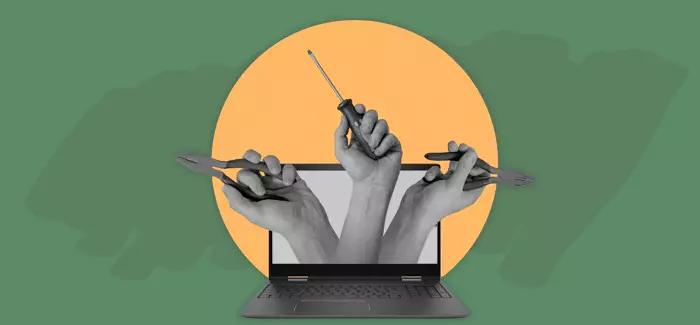Human-centric roles to watch

Written by Lorie A. Parch

Reviewed by Jessica Roper, MBA, director of Career Services at University of Phoenix

Quick: Name a job that doesn’t exist anymore. Even careers that have their roots in the past — blacksmith, candlemaker, apothecary, to name a few — are still things a few people do, often just in an updated form. (A modern-day apothecary is a pharmacist, after all.)
Historically, comparatively few roles have been made completely obsolete by automation and technology. Think elevator operator. Switchboard operator. Knocker upper (folks paid to tap on windows to wake people up for work in the days before electronic alarm clocks).
If you’re concerned that artificial intelligence is coming for your job, that might be worth remembering.
“Throughout our history, anytime there’s a new technology, there’s a little bit of excitement and a little bit of panic,” notes Lisa Severy, PhD, a career advisor at University of Phoenix. “Certainly, we have seen professions that go away because of new technology, but generally a role morphs into something else.”
What are ‘human-centric’ roles?
Even the most bleeding-edge jobs still require skills that people are (currently) better at than machines, and there remain plenty of careers that might be called human-centric.
“I think of the categories of jobs that leverage our human strengths: emotional intelligence, human connection, empathy, relationship-building and emotional support,” says Severy.
The impact of AI on jobs will almost certainly be mixed. New jobs will be created while some positions will be fully automated, and many — arguably most — will be modified. Some by a little, others by a lot. The jobs that look different from how they once did will be characterized by “complementarity,” as one article on Medium.com put it. This means that technology augments the “tasks where human expertise is still essential.”
Severy views this as the ideal: “Like a lot of technology before, we will change the way we do something and potentially increase efficiency and productivity.”
Ideally many of us will still get to do what we do best. For example, an emergency room doctor may use AI to help diagnose a patient quickly and accurately, but their skills as a physician — even when robot-assisted — are what saves a life.
Similarly, AI may analyze vast amounts of data about dining trends and optimize food-supply chains, but a chef’s palate and creativity are critical to developing new dishes.
AI-powered applicant tracking systems and analytics may identify the specific skills a company needs, find candidates and look for applicants similar to those who thrive in the company’s culture. All of these can significantly inform the hiring process, but an HR specialist is critical to analyzing the data and ensuring fairness and ethical hiring practices.
People who need people
University of Phoenix recently released its 2025 Generative AI Report: Learning Fuels Human + AI Collaboration, a survey of more than 600 employees (frontline and knowledge workers) and learning and development leaders in a range of industries across the U.S. While workers’ concerns about generative AI remain, more than 60% of those surveyed said they’re already saving one to two hours a day by using generative AI.
“When asked what they do with the time they saved,” says Severy, “the overwhelming answer was ‘connect with people.’”
That human connection continues to matter a lot. While most careers will likely be informed by some kind of technology, there will still be what might be called “non-automated jobs” — those that are old school but essential. Some require manual dexterity, imagination and creativity to make something truly unique: glassblower, ceramicist, sculptor, quilter, painter, illustrator, musician, composer.
Others are roles that most of us probably wouldn’t want to watch a robot do, such as actor, comedian, singer and dancer. Related to those are supporting roles like director, producer, choreographer and conductor.
Arguably less creative but more functional are the roles that support modern life, like plumbing, electrical work, construction labor, landscaping and other skilled trades, which humans will likely continue to do.
What’s more, we will likely remain exceptionally better at dealing with complex situations and emotions. “AI can mimic that, but we’re better at understanding nuance,” Severy says. She gives the example of a healthcare navigator or advocate. “Anyone who’s gone through a medical crisis knows that navigating the healthcare system is really hard. It takes someone who knows how to do that, and it’s hard to do without emotional intelligence. That has to do with persuading and influencing people to do what needs to be done for that patient.”
Ethics, conflict resolution and moral reasoning are what Severy calls “gray areas” that benefit from our ability to understand subtleties and establish human connection.
Using AI to find your role
When working with students and alumni, Severy encourages them to use AI to identify a viable career path, including non-automated roles that leverage their unique and human talents.
“A great prompt is to say, ‘I have this major, I have 10 years’ experience in this field and I have these skills. What are some good career options for me?’” she suggests. “We just don’t have exposure to the bazillion career fields out there, and using technology to integrate some of that information is great. Then you can start a conversation with a career advisor on a completely different level.”
Human-centric roles to watch
The list that follows highlights some human-centric careers and jobs where our strengths of compassion, communication, collaboration, creativity and empathy shine brightest, as well as our ability to perform skilled, hands-on work.
- Attorney
- Chef
- Community organizer
- Creator/artist
- Diplomat
- Ethicist
- Executive coach
- First responder
- Healthcare (nurse, physician, and allied healthcare professionals like midwives, physical and occupational therapists, audiologists, dietitians and more)
- Human resources specialist
- Humanitarian aid specialist
- Judge
- Leaders
- Patient advocate/healthcare navigator
- Skilled trades (carpenter, welder, electrician, mechanic, mason, plumber, heavy equipment operator, construction technician, HVAC specialist)
- Spiritual advisor/chaplain/pastor/rabbi/imam
- Therapist/counselor/psychotherapist
While this list offers no guarantees in terms of comprehensiveness or timeliness (technology changes almost constantly), it does suggest that human-centric roles will be around for as long as humans are.
Career resources for human-centric roles and more
Not sure where to start when looking for a human-centric role? UOPX offers an array of resources that, while not covering every aspect of your journey, accommodate a wide variety of professional needs.
- Career Services for Life® commitment: Available to UOPX students and graduates, this offering comprises complimentary career coaching, including guidance on how to build a personal brand and write a resumé.
- Free career resources: Browse a range of downloadable guides and templates to help you optimize your LinkedIn® profile, get ready for a job interview and write a resumé and cover letter.
- Career With Confidence™ newsletter: Get career insights every week via UOPX’s LinkedIn newsletter.
LinkedIn is a registered trademark of LinkedIn Corporation and its affiliates in the United States and/or other countries.

ABOUT THE AUTHOR
Lorie A. Parch is a long-time journalist, editor and content strategist based in Chandler, Arizona. She primarily covers higher education, technology, public safety and lifestyle topics, and for four years led digital content strategy at the California State University Office of the Chancellor. A former Knight Journalism Fellow at the CDC and a National Magazine Award-nominated writer, Lorie's work now focuses on strategic communications and marketing. When she's not buried in a book, she loves traveling, painting and ceramics.

ABOUT THE REVIEWER
Jessica Roper, University of Phoenix director of Career Services, is a seasoned leader with over 15 years of experience in leadership within higher education. She has honed her expertise in student services and career development and is passionate about helping others discover and refine their skills.
This article has been vetted by University of Phoenix's editorial advisory committee.
Read more about our editorial process.


